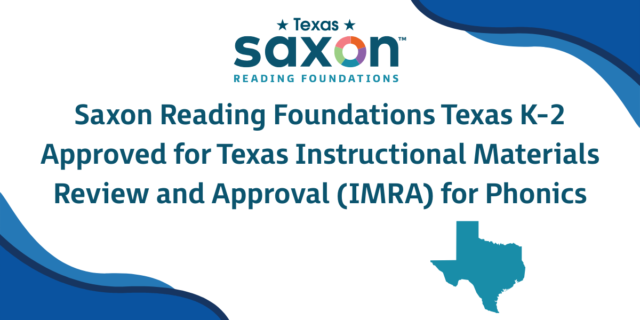
Reading is a fundamental skill that forms the backbone of learning. However, not all students find it easy to read and comprehend text. From decoding unfamiliar words to grappling with intricate narratives, these students often find themselves navigating a labyrinth of obstacles.
Enter the power of pre-reading scaffolds.
Before reading a text, it helps to set the stage for understanding. Pre-reading scaffolds help students:
- anticipate the topic;
- familiarize themselves with key vocabulary; and
- activate their background knowledge.
This pre-reading stage can be a game-changer for struggling readers, providing them with the necessary tools to navigate the text with greater confidence and comprehension. By using the right pre-reading strategies, you can help many students turn this maze into a roadmap.
Seven Types of Pre-Reading Scaffolds
Drawing on insights from Kylene Beers’ new edition of When Kids Can’t Read—What Teachers Can Do, this blog post presents seven effective pre-reading scaffolds to try in your classroom.
Anticipation Guides
Anticipation guides prepare students for what they’re about to read. They present statements that students agree or disagree with, sparking curiosity and engagement. This process also paves the way for students to connect their personal beliefs to the text, facilitating deeper comprehension.
Let’s say you’re about to start a unit on climate change. To activate students’ prior knowledge and encourage them to think critically about the topic, you might create an anticipation guide with statements like:
1. Climate change refers to short-term changes in weather patterns.
2. Human activities are a significant contributor to climate change.
3. The effects of climate change can be reversed in a few years.
Students will then agree or disagree with each statement. This exercise not only primes students for the topic but also sparks curiosity and discussion, paving the way for a deeper understanding of the upcoming content.
KWL 2.0
A familiar strategy in many classrooms, the KWL chart helps students access their prior knowledge, formulate questions about what they want to learn, and consolidate their learning at the end. A KWL 2.0 is an updated approach that makes a strong link between what students know and what they want to learn.
In the traditional KWL chart, students often struggle when asked, “What do you want to know?” They’ve just shared all they know, so how are they supposed to know what they don’t know? The solution lies in making a tighter connection between the first and second columns of the chart.
After discussing what they know, select a fact and ask, “What more do you want to know about this?” By focusing on a specific aspect of their existing knowledge, students can generate more targeted questions.
Probable Passage
In this pre-reading scaffold, teachers present students with 8-10 key words from the text. Students categorize these words, write a predictive summary about the text’s content, and create inquiry questions they hope will be answered in the text.
After reading, they revisit their worksheet to answer their inquiry questions, reconsider word categorization, and rewrite their summary from the author’s perspective.
Imagine a middle school Language Arts class about to read an unfamiliar poem. Instead of providing background about the poet or the poem, the teacher uses the Probable Passage scaffold to prompt students to predict the poem’s content.
The teacher shares the key words, and students work in small groups to categorize them and write their predictive summary statements. During the activity, students will likely debate where to place words. They will hypothesize relationships between characters, causes and effects, and even speculate about potential problems in the poem.
In this way, Probable Passage encourages students not only to predict and question but also to reflect on the reading process from different perspectives. It helps them engage more deeply with the text and promotes critical thinking about the author’s choices.
Possible Sentences
Focusing on key words from a text before reading, Possible Sentences encourages students to use their knowledge to write sentences they think might appear in the text. This pre-reading scaffold works well with nonfiction.
Similar to Probable Passage, you provide students with a list of key words from the text. The words should be familiar to the students—don’t select words that students won’t know. If a term or name is new, replace it with a more descriptive phrase. (For example, if you are reading about Harry S. Truman, don’t use his name if this is students’ first introduction to him. Instead, use “thirty-third president of the United States.”)
Students then use three to five of these key words to write each sentence. After reading the text, students return to their possible sentences and make any necessary corrections.
For students who might find a larger list of key words overwhelming, you can limit the list to a few key words at a time. After students write a sentence using these words, you can present the next set of words. This way, students can gradually build their understanding.
Word Splash
Another scaffold that encourages students to predict the subject matter of a text is Word Splash. In this strategy, you create a visual “splash” of words and phrases taken directly from the text. One way to achieve this is by using tools like WordClouds.com.
Once you’ve prepared the Word Splash, share it with your students. They then work in small groups, using the words from the splash to construct sentences. This act of prediction and anticipation not only intrigues them about the text but also aids in comprehension when they begin reading.
An interesting extension of Word Splash is its application in student writing. Encourage your students to create their own word clouds using their essays. By uploading their work to WordClouds.com, students can visualize the most frequently used words in their writing. This can prompt them to reflect on whether the main point they intended to communicate is mirrored in their word usage.
Tea Party
Unlike other scaffolds that use key words from a text, the Tea Party scaffold involves presenting students with entire sentences or phrases from the text. This activity gives students a chance to consider parts of the text before they actually read it.
Each student receives an index card with a unique sentence from the text. They share these phrases either by circulating in the room or within smaller, desk-based groups. After sharing, they construct a summary statement, predicting the text’s meaning based on the phrases they’ve heard.
After reading the full text, they reflect on their predictions in context. Students also identify which phrase best aided their predictions. If their prediction was inaccurate, they select a phrase that would have improved it. This encourages critical thinking and comprehension.
Knowledge Rating Charts and Thematic Clusters
Knowledge Rating Charts and Thematic Clusters are scaffolds that encourage self-assessment and reflection, allowing students to tap into their existing knowledge before diving into a new text.
In Knowledge Rating Charts, students assess their familiarity with a word, ranging from “I’ve never heard this word” to “I use this word all the time”. This is a way for students to self-evaluate their understanding of key terms and see how their understanding has changed after reading.
Thematic Clusters, on the other hand, ask students to reflect on their knowledge of a topic or theme, grouping related words into categories.
For example, in a science class starting a unit on the Milky Way, the teacher uses Thematic Clusters to gauge students’ existing knowledge. Each small group is given a piece of chart paper and asked to create categories related to the Milky Way based on their prior knowledge. They then fill each category with relevant information they already knew (no internet searches allowed). As the groups share their charts, the teacher gains insight into what concepts the students are already familiar with and identifies areas requiring more focused instruction.
♦ ♦ ♦ ♦
Pre-reading scaffolds are powerful tools that can equip struggling readers with the skills and confidence they need to navigate and comprehend text. By setting the stage for understanding, these scaffolds can turn the reading process from a daunting task into an engaging and enlightening experience.
Remember, different scaffolds may work better for different learners or different types of texts. Don’t forget to download the related graphic organizer pack to help you experiment with these strategies.
Grow your confidence as a reading teacher with professional books like When Kids Can’t Read—What Teachers Can Do. Looking for something different? Explore more of our reading professional books for K-12 teachers.


